This fall, Andrea and I explored two fabulous areas we hadn’t been to before – both less than 2 hours drive from our home. Here is the first ……..
Wells Gray Provincial Park – 7-11 September 2023
Surprisingly we had never been in the main portion of this park before – we had kayaked on Murtle Lake in the northeast corner of the park but never ventured into the central portion. So we took our little truck camper and spent five days (four nights) there. We stayed in Pyramid Campsite which was centrally located and we made day trips from there.
A hike up to the alpine on the Trophy Mountain trail was a major highlight. One can drive a long way up the mountain and the trail from the parking lot to the alpine areas is a gentle uphill. After 45 minutes one emerges from the forest into beautiful grassy meadows. We were too late in the season for most wildflowers but the scenery was still exceptional.
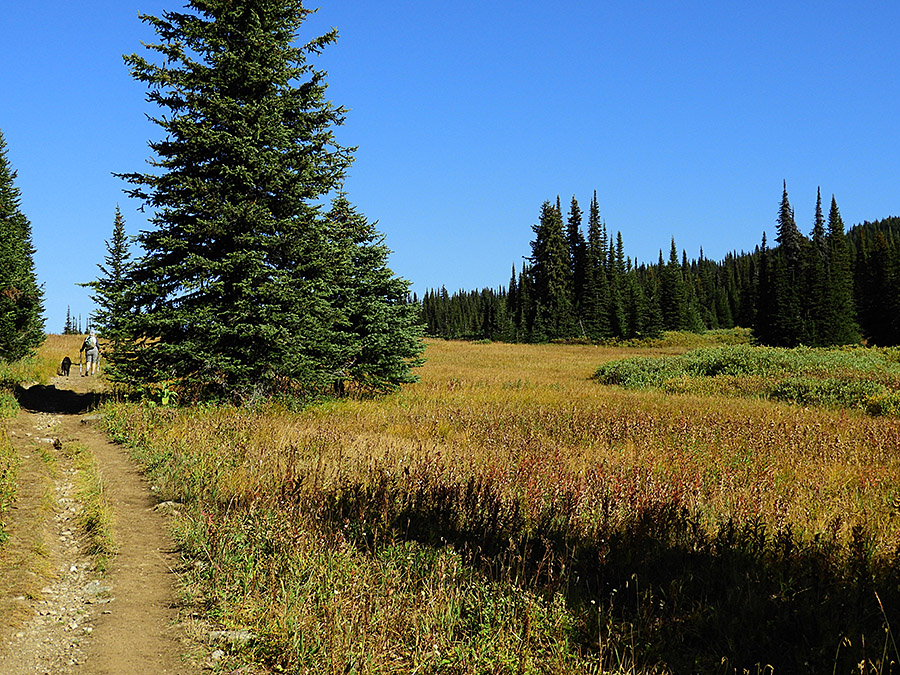
The Trophy Mountain trail at the start of the alpine meadows, Wells Gray Provincial Park.
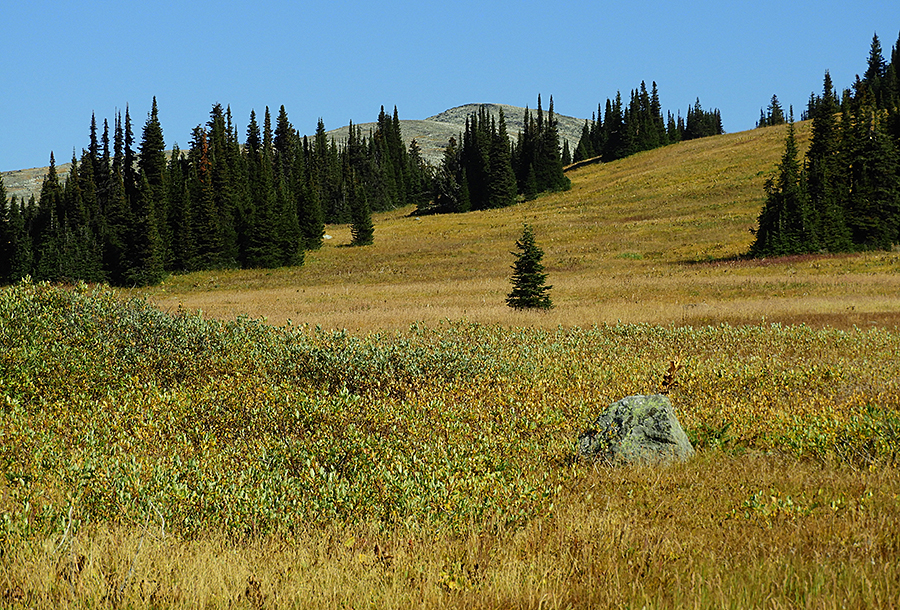
Alpine Meadows on the Trophy Mountain trail.
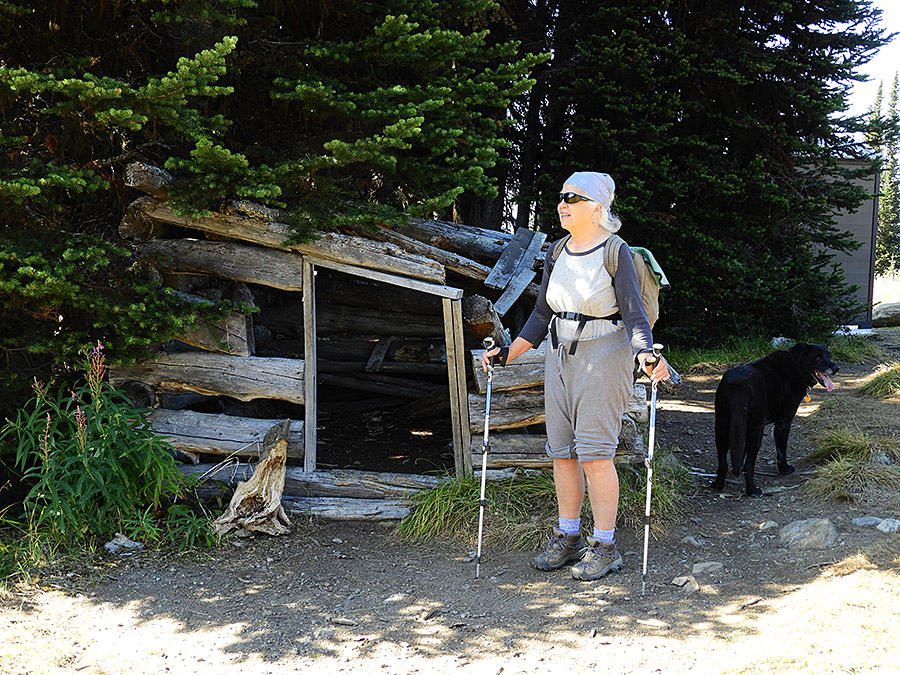
Andrea and Kona at the remains of a hut used by a trapper/shepherd in the 1950s. Not exactly luxury accommodation.
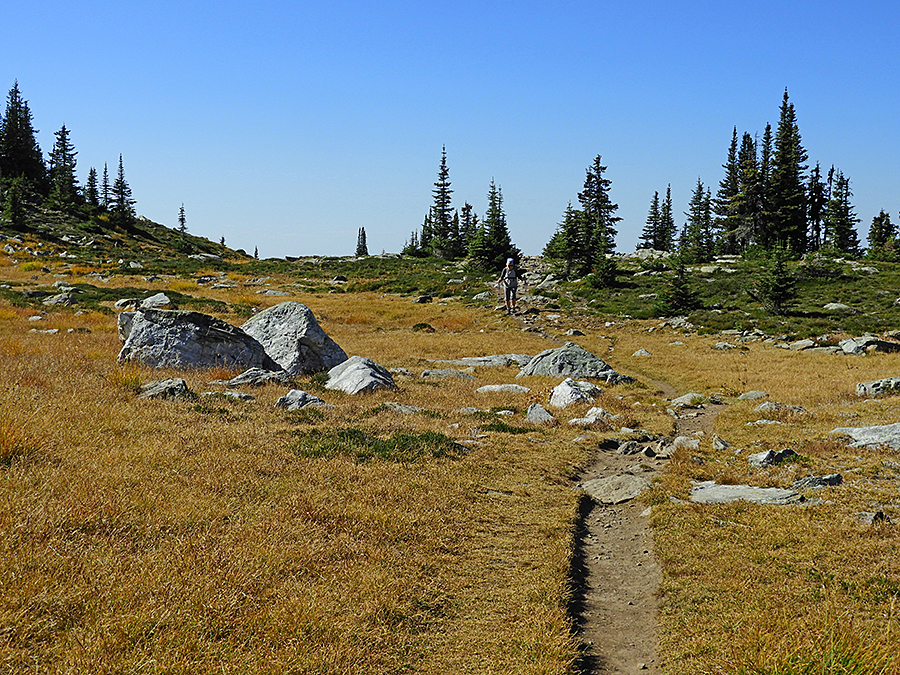
The Trophy Mountain trail
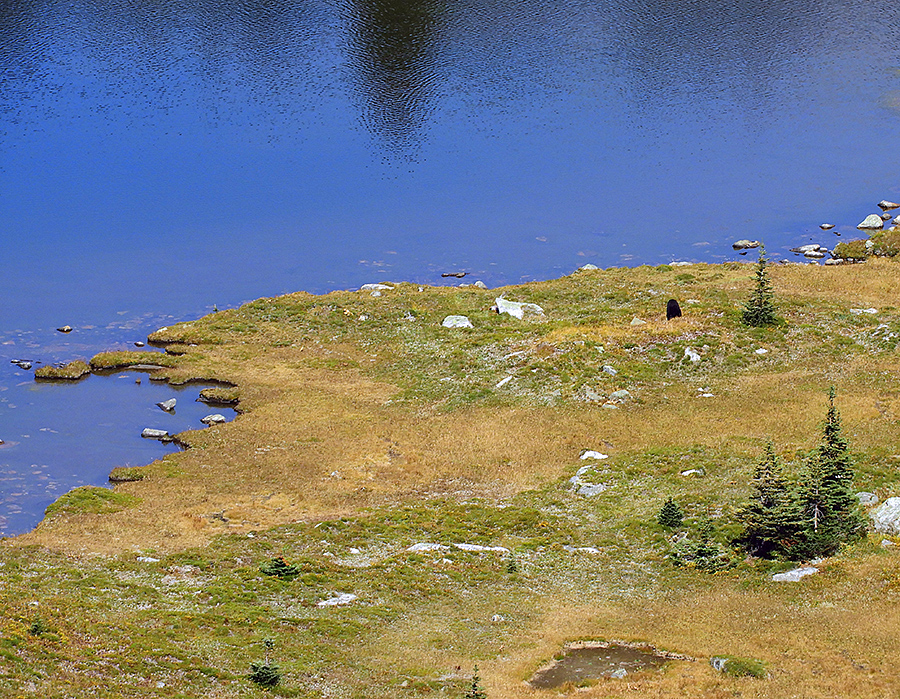
Spot the bear. This Black Bear was grazing on marsh plants at a small lake just below Sheila Lake. Fortunately a safe distance away from our trail.
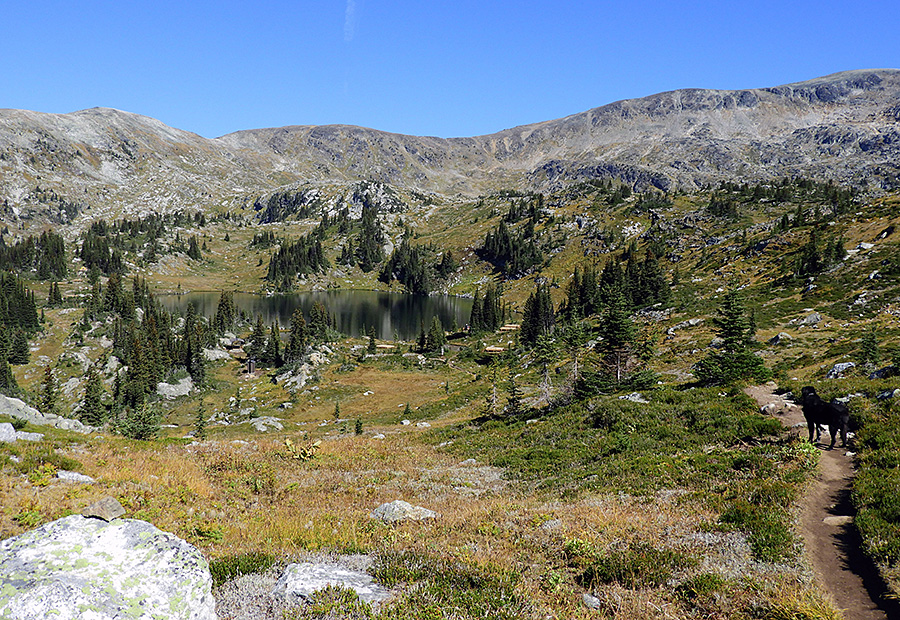
Sheila Lake is a popular and well-organized campsite in the alpine area. Part of Trophy Mountain on the right.
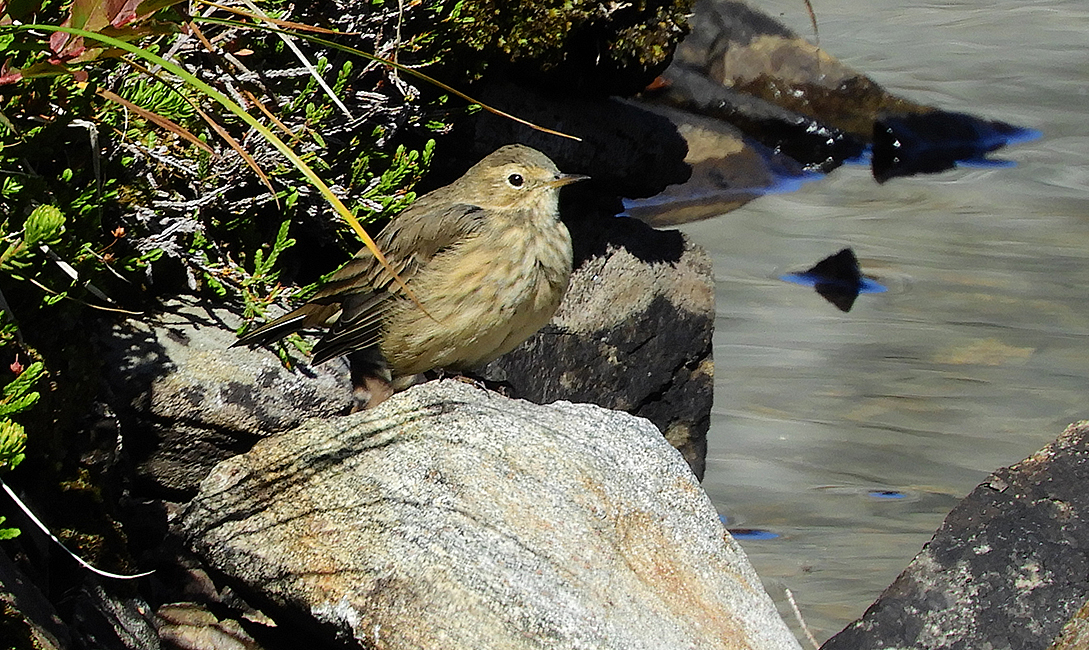
An American Pipit at Sheila Lake
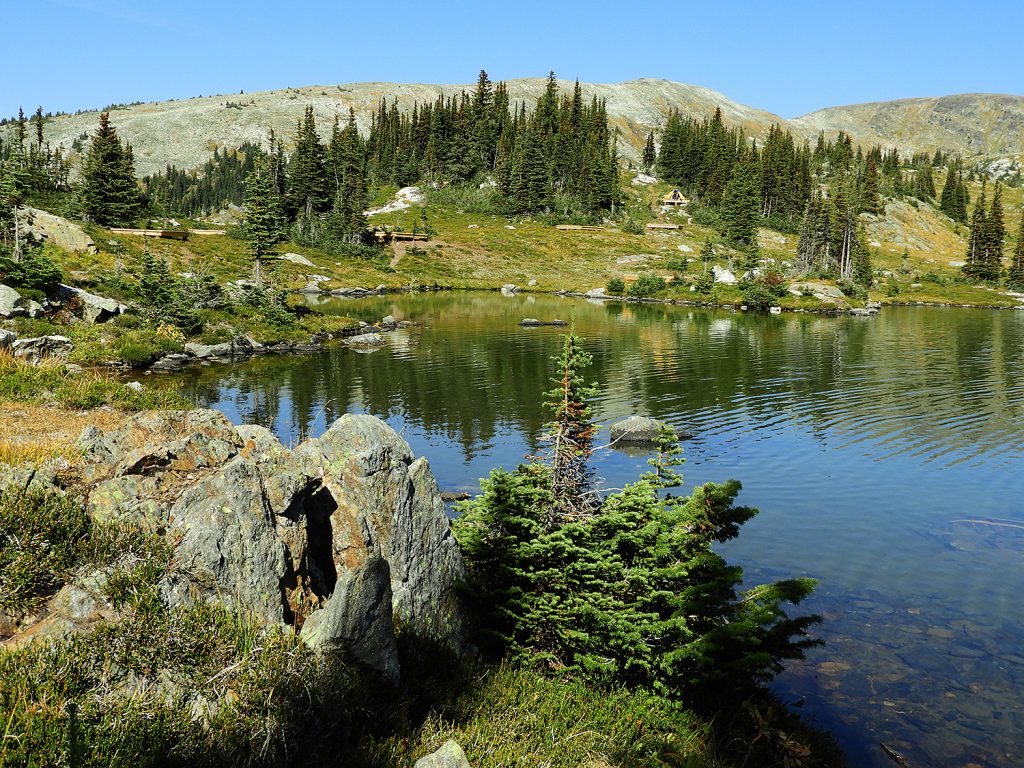
Sheila Lake, Wells Gray Provincial Park. The tent platforms are a recent addition to protect fragile alpine habitat.
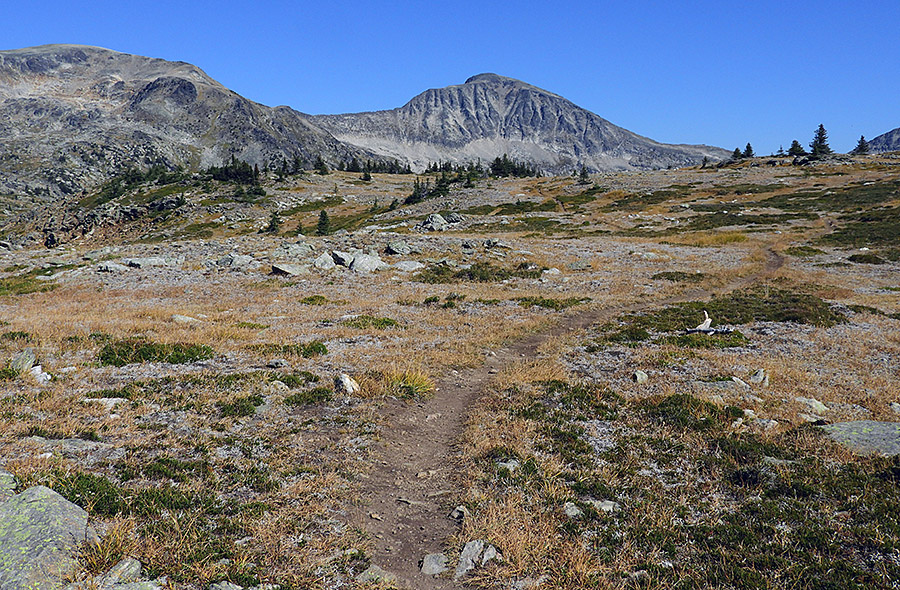
Beyond Sheila Lake the trail heads up into more sparse alpine habitat. Trophy Mountain is in the background.
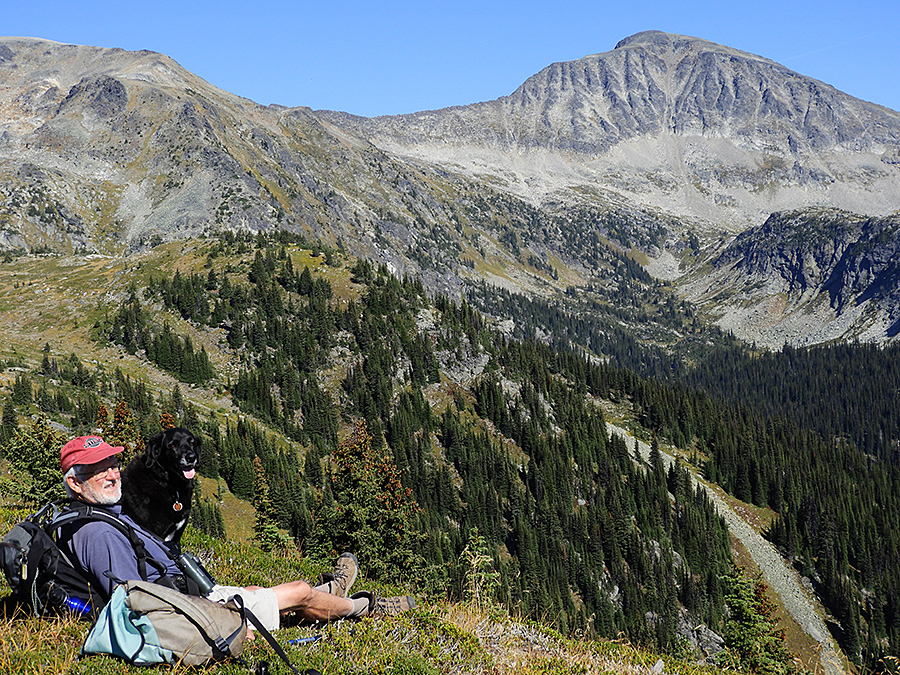
Alan and Kona at a high lookout with Trophy Mountain behind. The peak is 2,350 m above sea level.
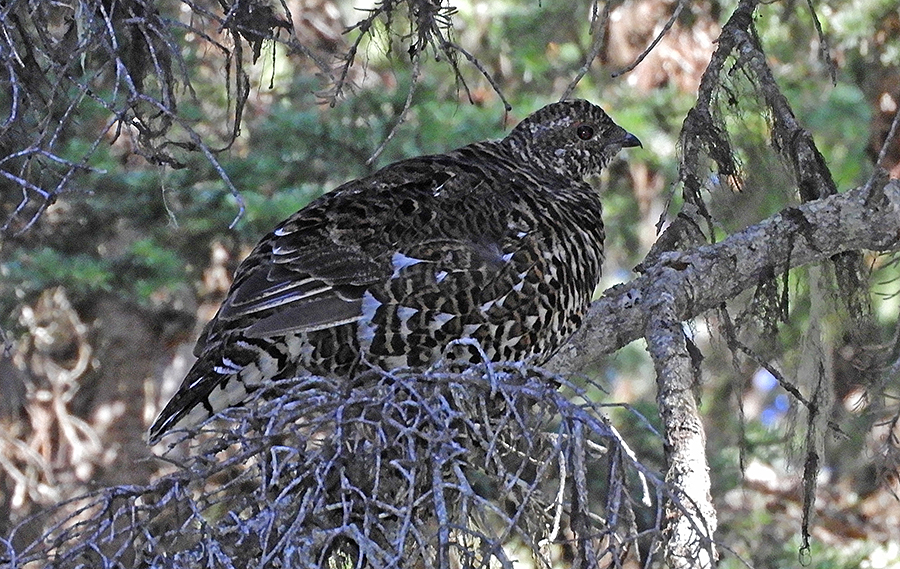
We found this Spruce Grouse in the forest along the Trophy Mountain trail.
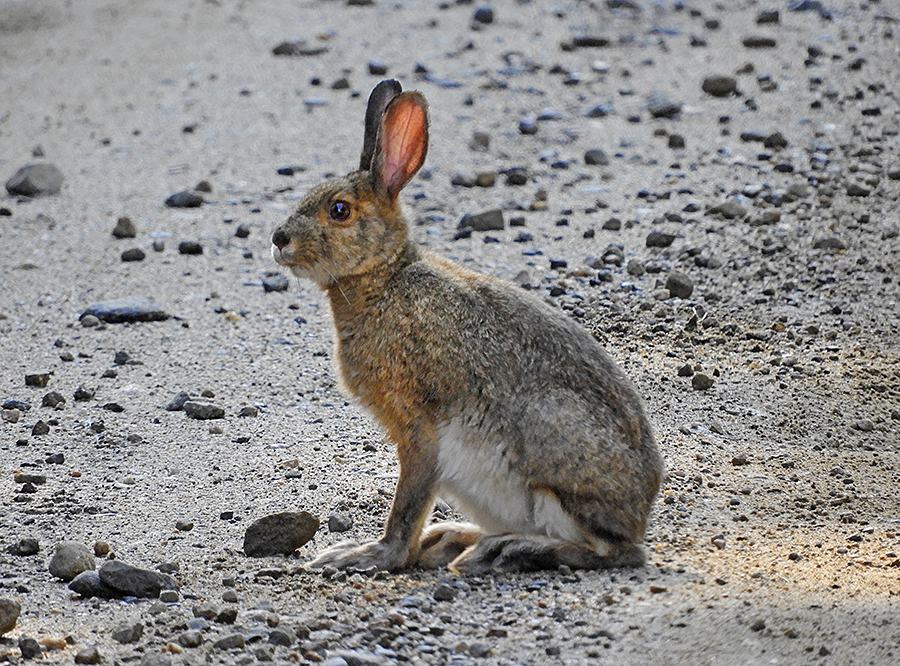
We encountered several Snowshoe Hares in Wells Gray Park – all in their brown summer outfits, but retaining white belly and paws. Look at the size of the paws – it is easy to see how the bunny gets its name!
Wells Gray Park is renowned for its many impressive waterfalls. Much of the central park is on a thick layer of basalt, about 600,000 years old. Basalt tends to flake away cleanly with water erosion, thereby creating steep waterfalls.
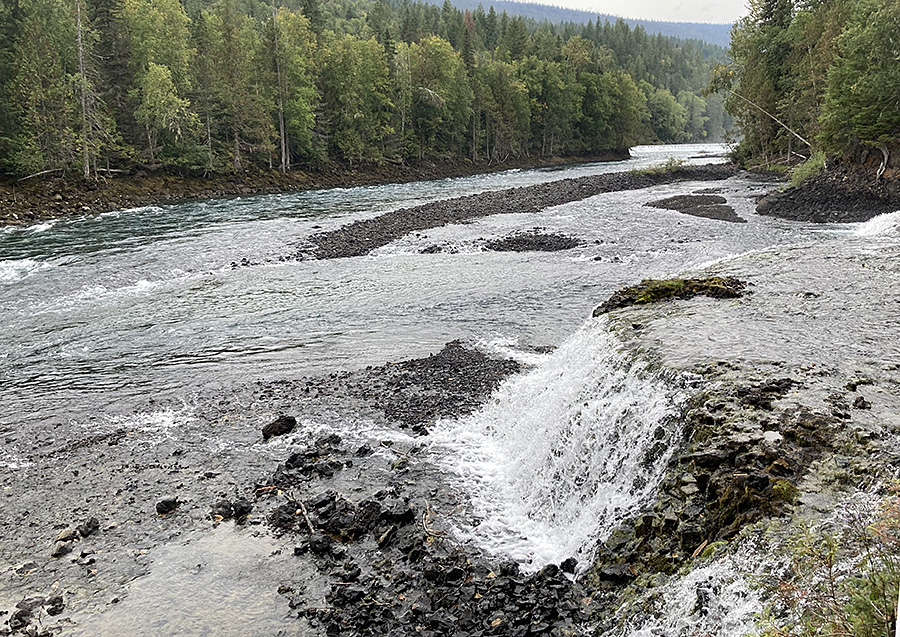
Osprey Falls just below Clearwater Lake, Wells Gray Park.

Panorama shot of Osprey Falls on the Clearwater River.
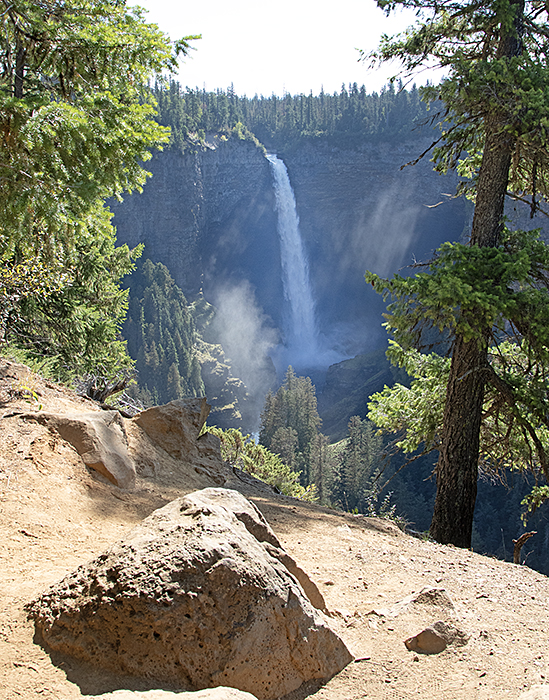
Helmcken Falls is the fourth highest waterfall in Canada. The Murtle River drops an impressive 145 m straight down and has chewed a major canyon for several kilometres through the basalt.
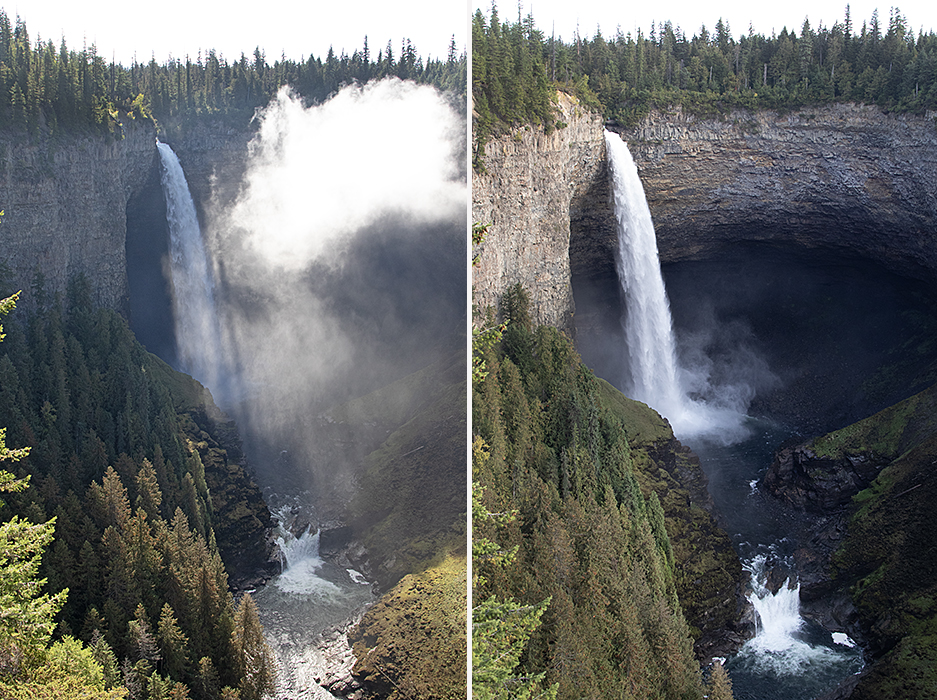
To fully appreciate Helmcken Falls we visited it twice – in the early morning on 8th September (left) and in the late afternoon on 10 September (right).
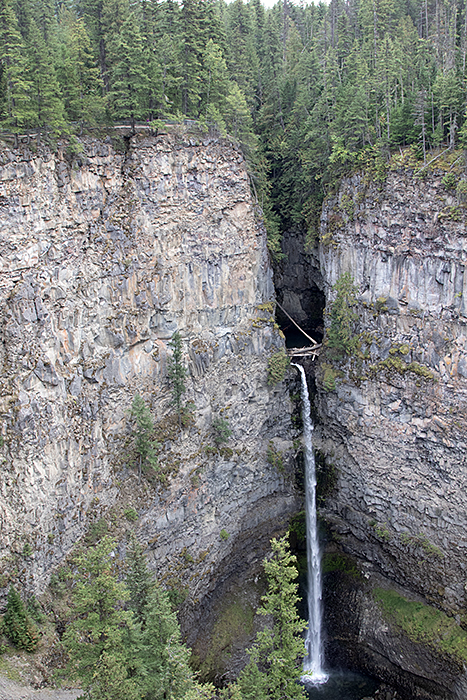
Spahats Falls – almost as impressive as Helmcken Falls, dropping 70 m into a narrow basalt canyon.
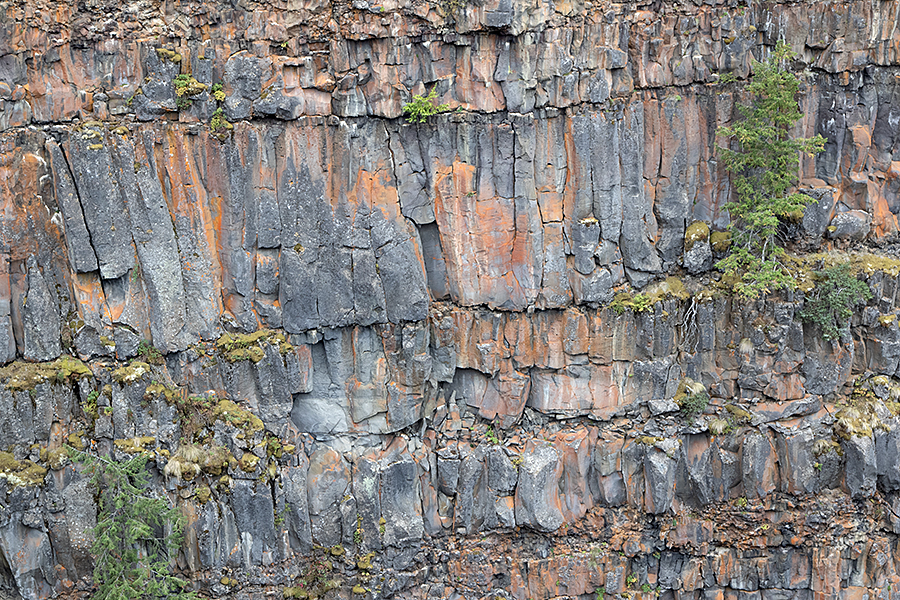
Basalt cliffs at Spahats Falls. These lava layers are 10-20 m tall.
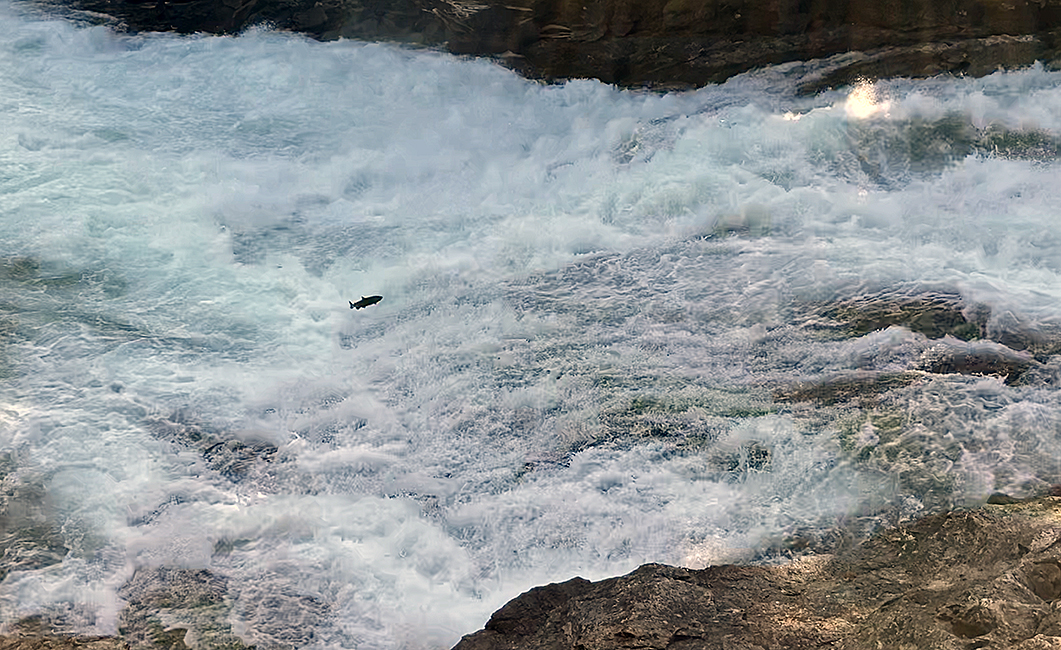
A large Chinook Salmon vainly attempting to leap up Bailey’s Chute on the Clearwater River. During our visit dozens of these big fish kept leaping up the cascade, only to be swept back by the relentless current. These fish were born in the Clearwater River nearby and are returning to spawn, having swum over 600 km upstream from the Pacific Ocean to reach this point.
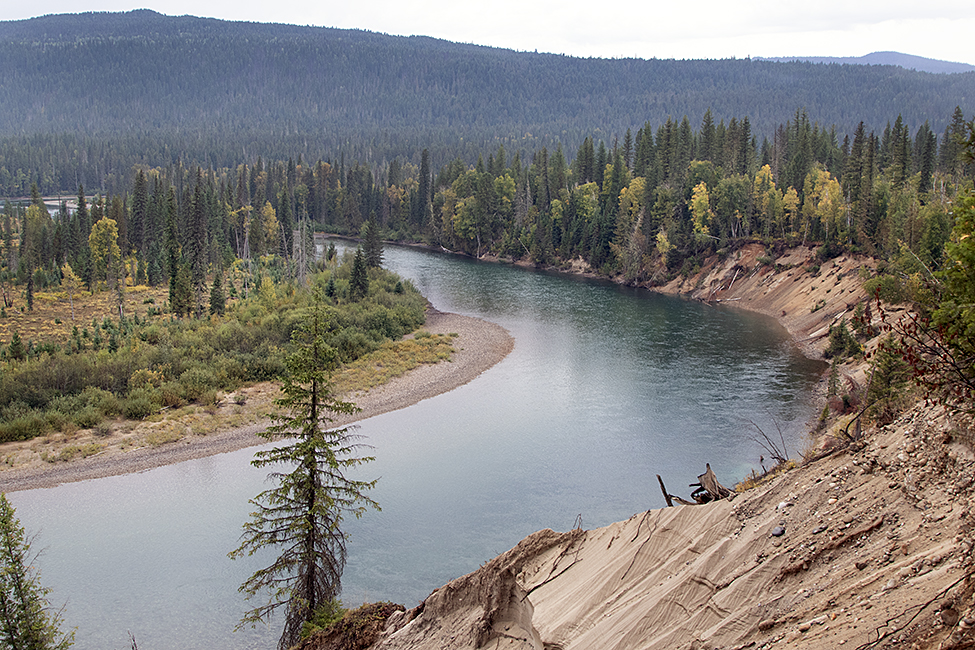
More placid waters on the Clearwater River at Horseshoe Bend – the shallows here are a major spawning area for the salmon.
We also did several hikes through the forested lowlands of the park, along lovely trails.
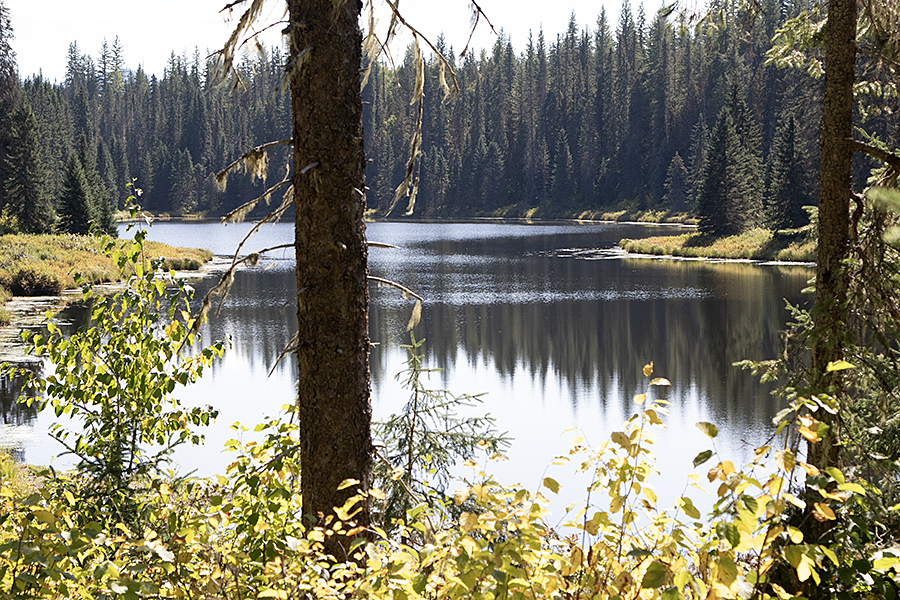
Alice Lake – one of many lakes in the forested areas of Wells Gray Park.
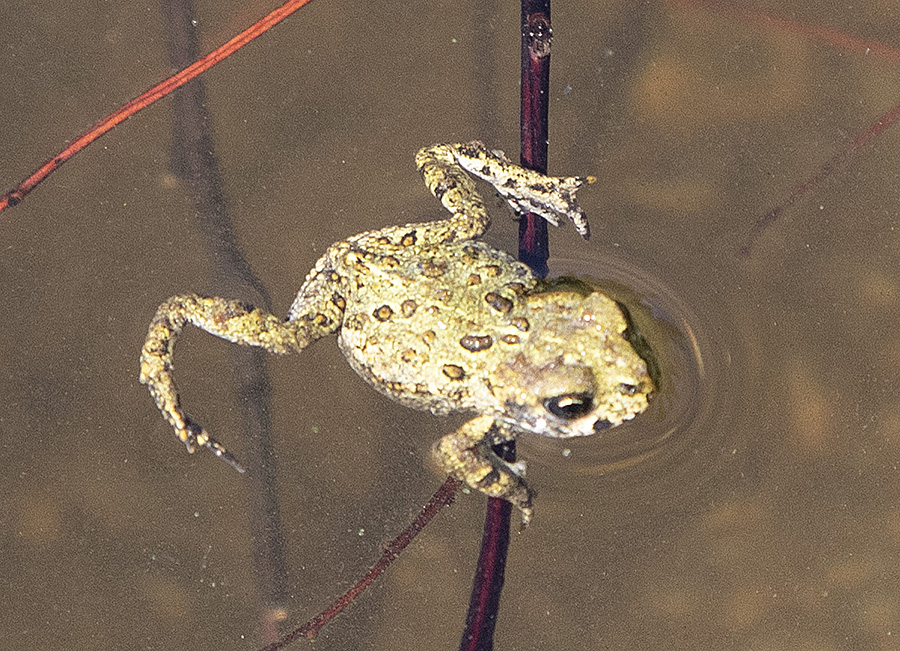
A tiny Western Toad toadlet in Alice Lake. Only 2 cm long it had recently metamorphosed from a tadpole in the lake.
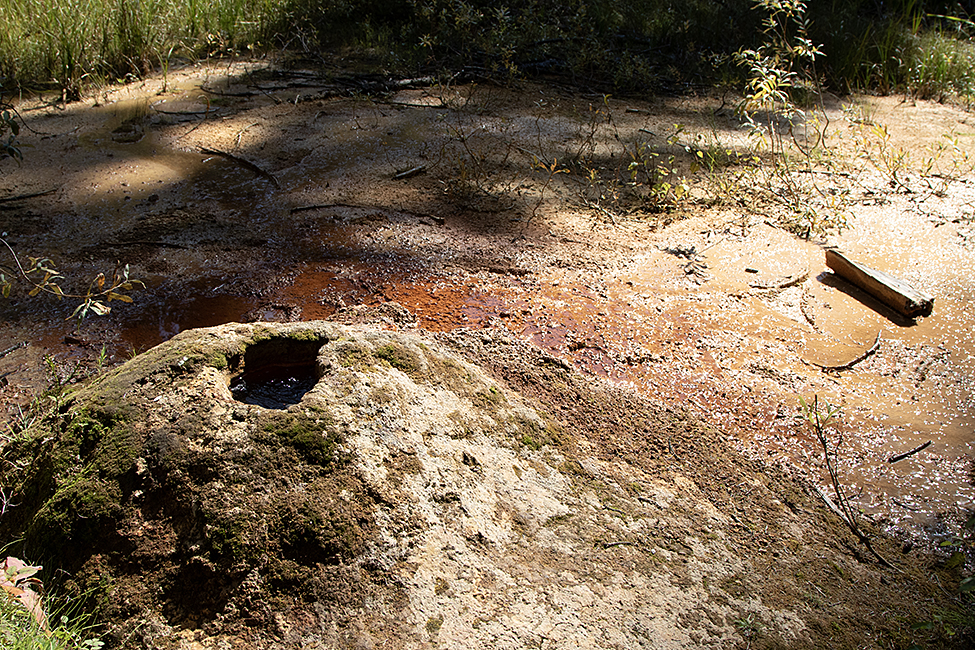
An interesting mineral springs near the Ray Farm in Wells Gray Park. We expected the water bubbling from this spring to be hot but it was icy cold.
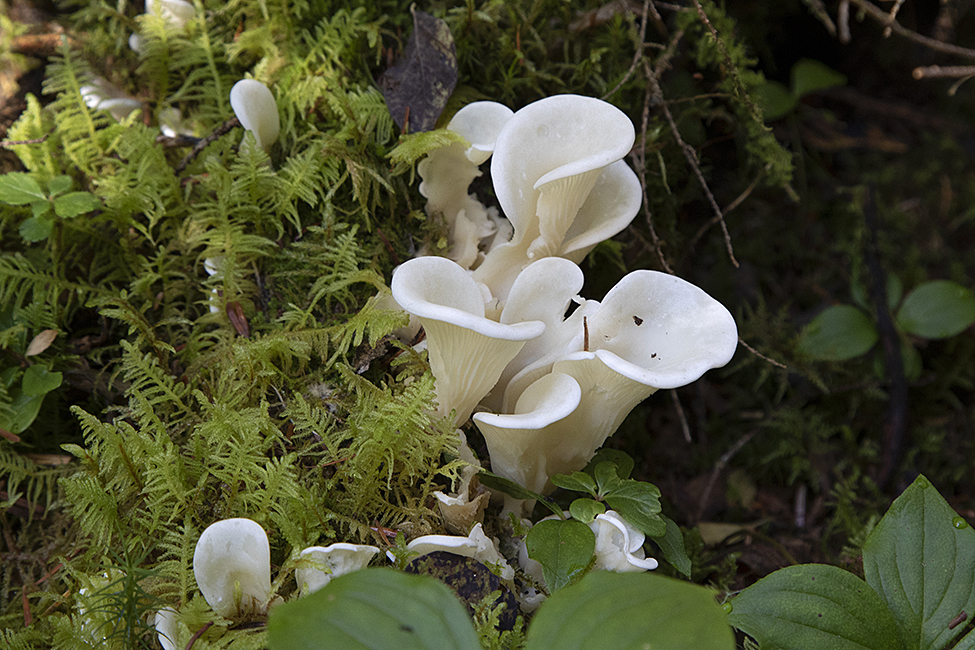
Angel’s Wings mushrooms (Pleurocybella porrigens) in the moist forest, Wells Gray Park.
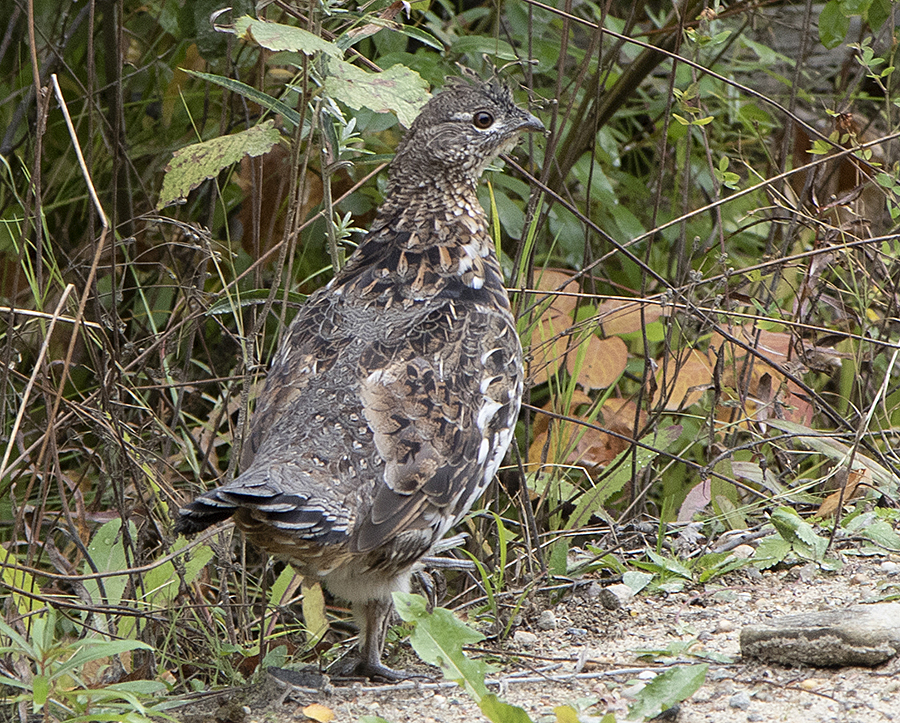
Ruffed Grouse were common along the roads and in the campsite at Wells Gray park.
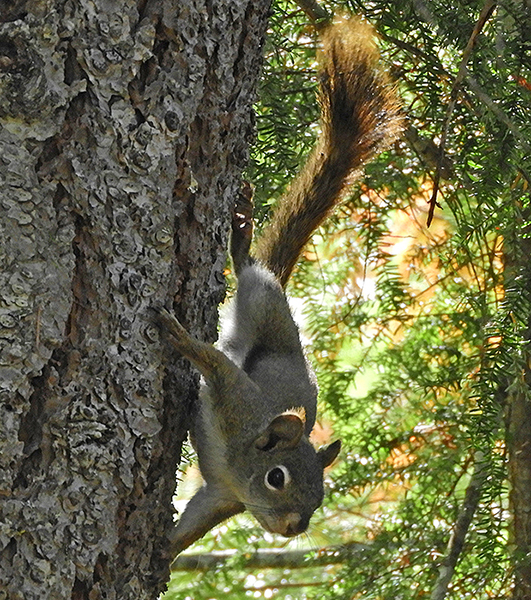
Red Squirrels are abundant in Wells Gray Park.
One hike took me to the top of Pyramid Mountain – an extinct tuya volcano – one that erupted under the immense ice-age glacier that covered this area tens of thousands of years ago. The views from the top were excellent.
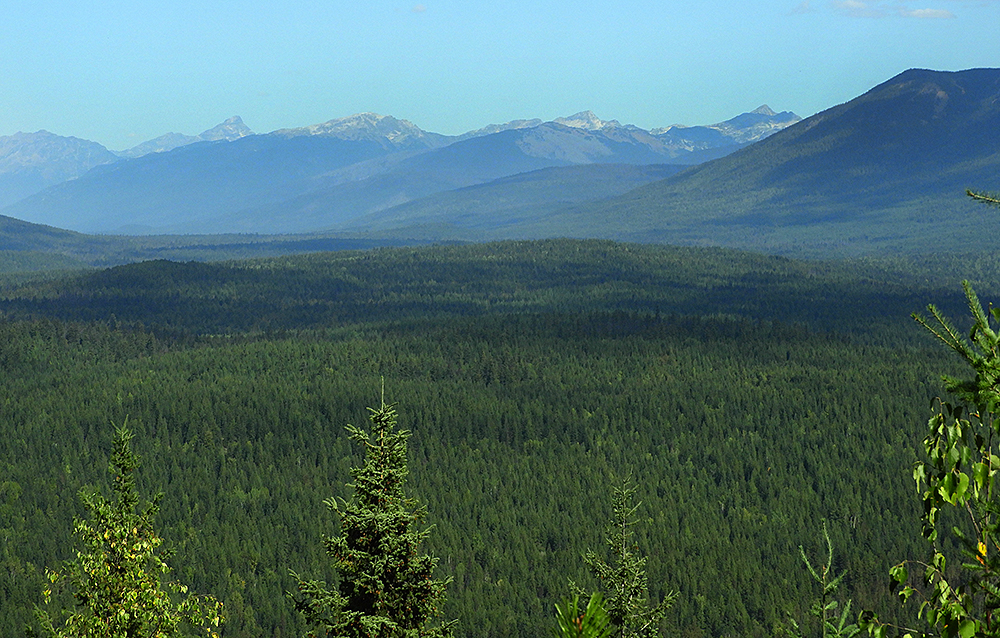
View from the top of Pyramid Mountain looking northeast.
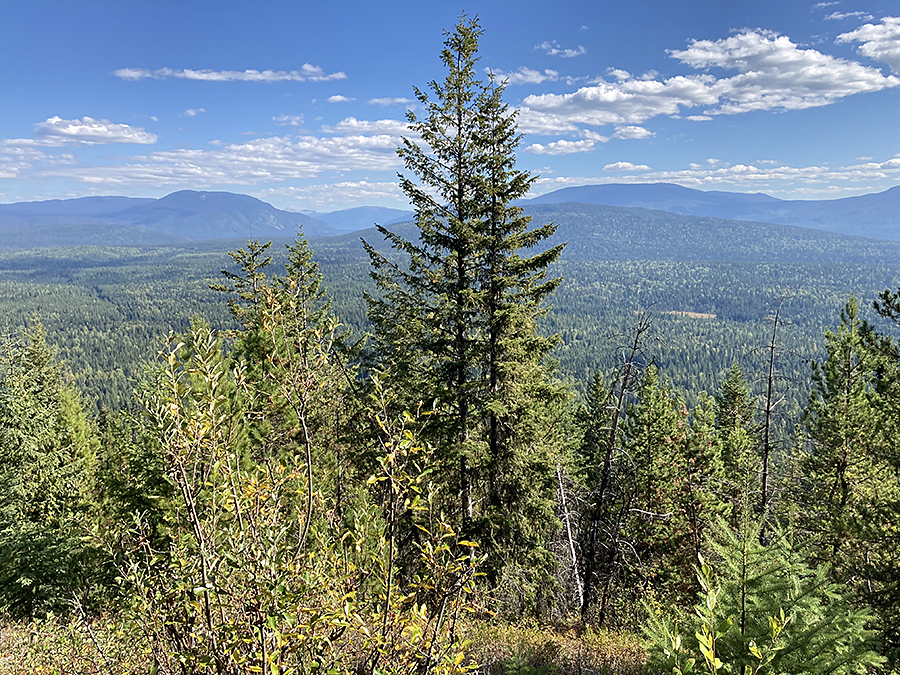
Looking east from Pyramid Mountain with the Murtle Lake valley in the far distance.
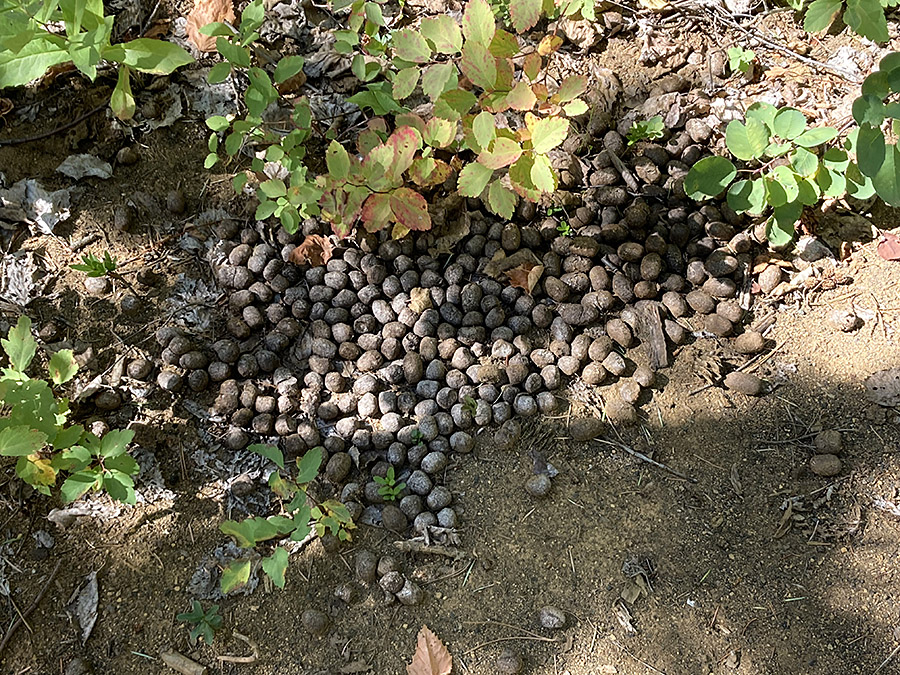
Moose are common winter visitors to the park and especially on the higher slopes like Pyramid Mountain. But all we saw were their winter nuggets.
The only downside to our Wells Gray experience was to have our camper invaded at night by mice (native Western Deermice). Having no mousetraps, we devised a margarine-container live-trap and with much patience and lack of sleep we captured and re-located eight of the little critters over several nights. The local store-keeper said there had been a huge demand for mouse-traps this summer.
~~~~~~~~~~~~~~~~~~~~~~~~~~~~~~~~~~~~~~~~~~~~~~~~~~~~~~~~
